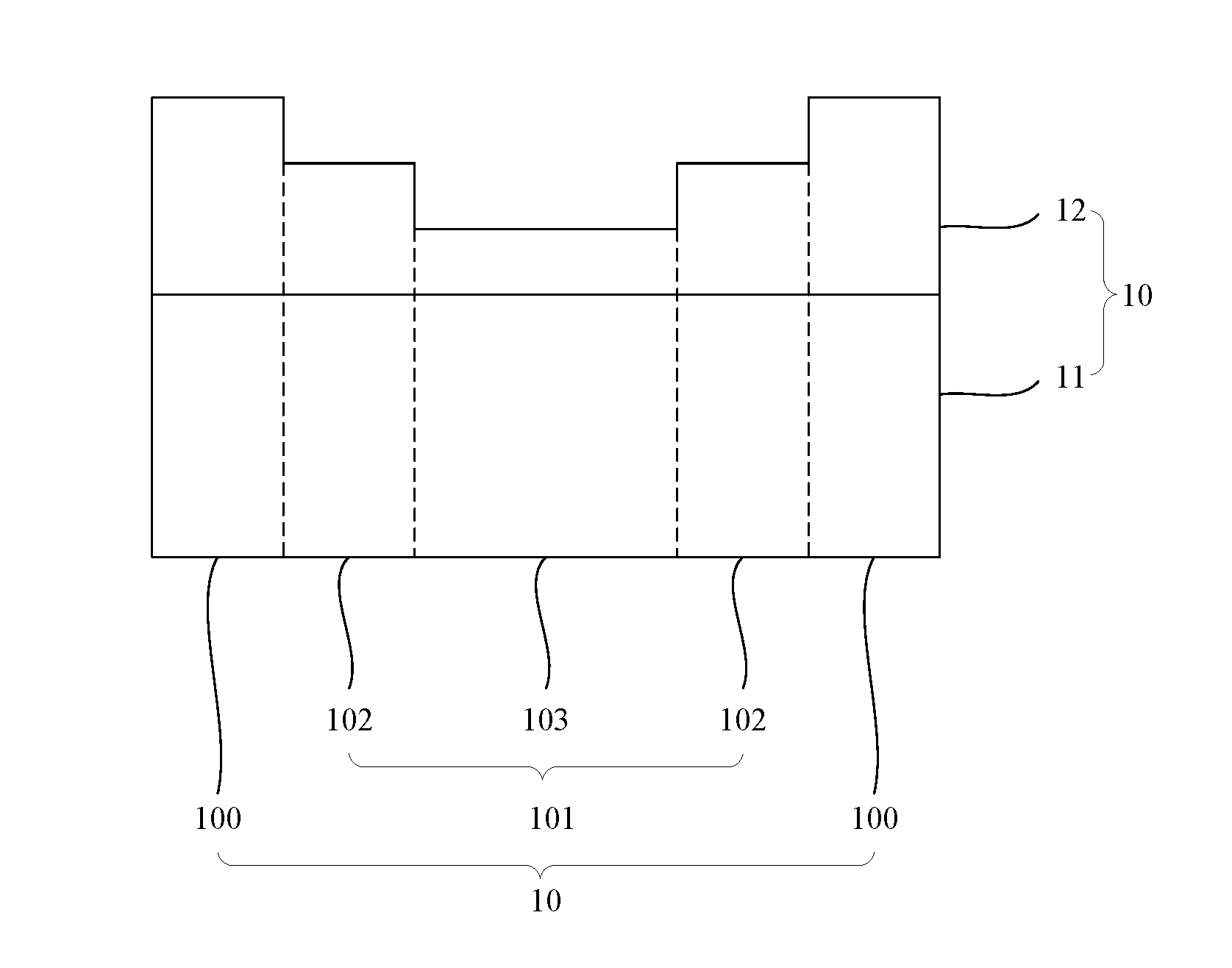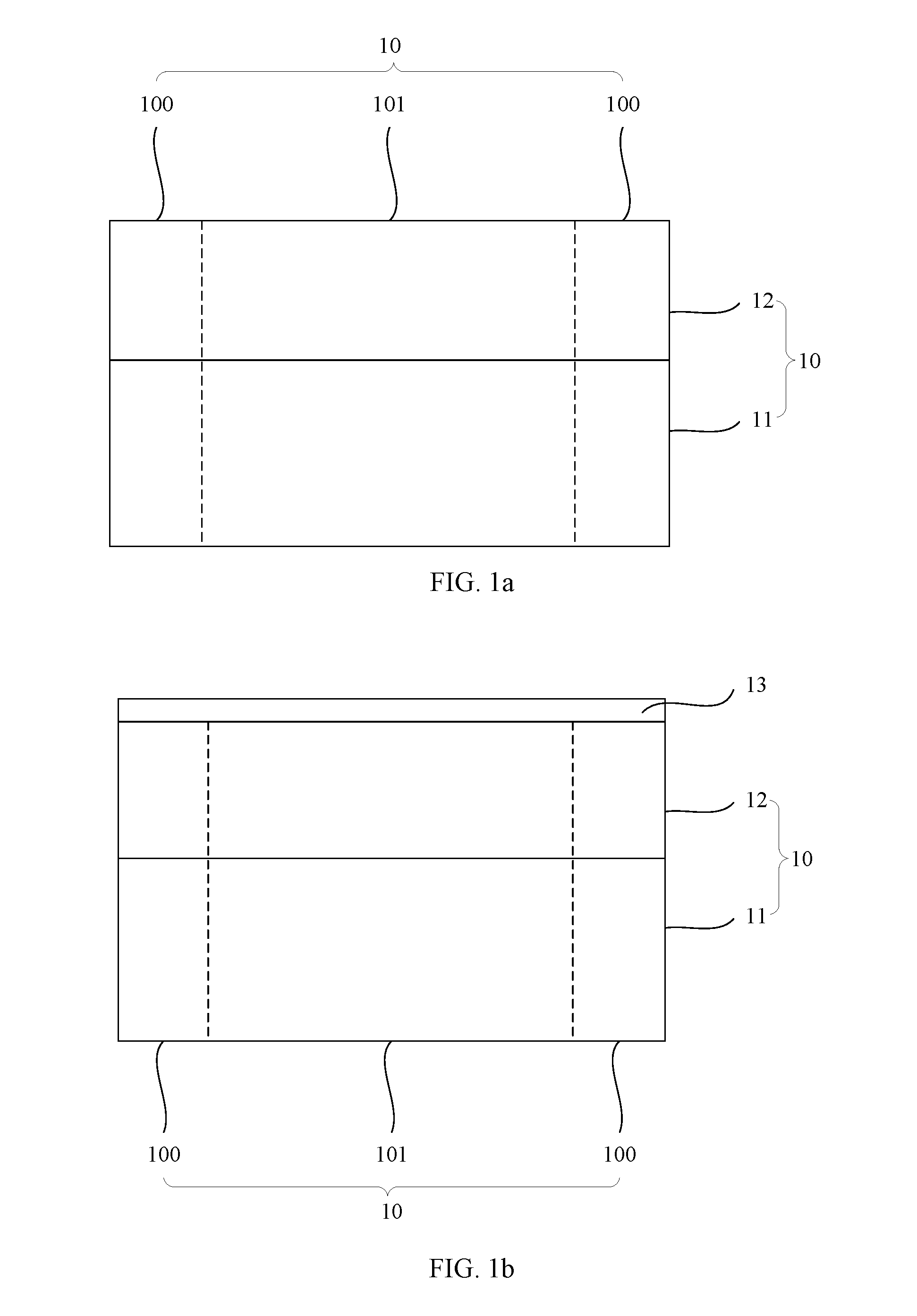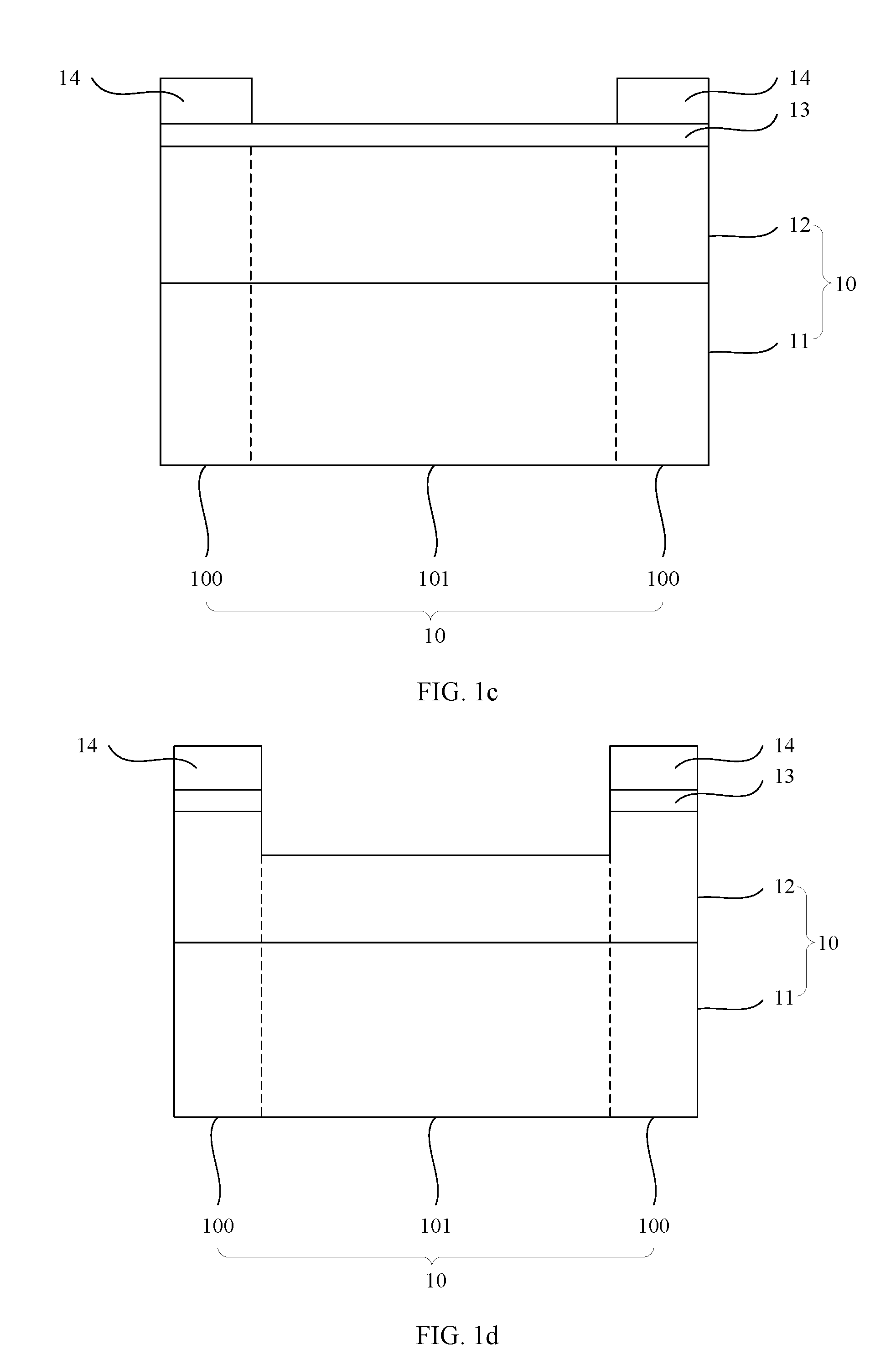Back-Illuminated Sensor Chips
a sensor chip and backlighting technology, applied in the field of backlighting sensor chips, can solve the problems of difficult lens modification, increased chip stress, and non-uniform imaging characteristic of a central area, and achieve the effect of increasing the light sensibility of the peripheral portion and more uniform imaging quality of the camera
- Summary
- Abstract
- Description
- Claims
- Application Information
AI Technical Summary
Benefits of technology
Problems solved by technology
Method used
Image
Examples
embodiment 1
[0020]Referring to FIGS. 1a to 1e, which are cross-sectional views illustrating the formation of a pixel area in the construction of a back-illuminated sensor chip in a fabrication method of the back-illuminated sensor chip according to a first embodiment of the present invention.
[0021]At first, a composite substrate consisting of a device wafer and a carrier wafer (bonded together) is provided and the backside of the device wafer is thinned. The composite substrate includes a plurality of chip dies each having a pixel area and a logic area surrounding the pixel area. FIG. 1a shows a pixel area 10 of one of the chip dies, which includes a portion of the device wafer 12 and a portion of the carrier wafer 11. Further, as shown in FIG. 1a, the pixel area 10 includes a peripheral portion 100 and a central portion 101 surrounded by the peripheral portion 100. According to embodiments disclosed herein, the composite substrate may be silicon or silicon-germanium, and so forth. Preferably, ...
embodiment 2
[0031]This embodiment differs from Embodiment 1 in that a concentration of ions implanted in the peripheral portion 100 is higher than a concentration of ions implanted in the central portion 101. Here, reference may be made to FIG. 1e. Specifically, a back-illuminated sensor chip according to this embodiment includes a logic area (not shown) and a pixel area 10. The pixel area 10 includes a peripheral portion 100 and a central portion 101 surrounded by the peripheral portion 100. The peripheral portion 100 and central portion 101 together form a step-like configuration with the peripheral portion 100 protruding outward beyond the central portion 101. In addition, a concentration of ions implanted in the peripheral portion 100 is higher than a concentration of ions implanted in the central portion 101.
[0032]More specifically, according to embodiments disclosed herein, during the manufacture of the device wafer 12 (i.e., before the backside of the device wafer 12 is thinned), multipl...
embodiment 3
[0042]This embodiment differs from Embodiment 1 in that the central portion 101 of the pixel area 10 is further partitioned into a first portion 103 centrally situated in the central portion 101 and a second portion 102 surrounding the first portion 103. The second portion 102 and the first portion 103 together form a step-like configuration, in which the second portion 102 has a height greater than a height of the first portion 103. In other words, compared to Embodiment 1, the pixel area 10 according to this embodiment has a finer configuration which can fit better with a corresponding lens to form a camera with more uniform imaging characteristics.
[0043]This embodiment can be implemented by carrying out the steps illustrated in FIGS. 3a to 3d, in addition to those shown in FIGS. 1a to 1d (i.e., the step shown in FIG. 1e is not performed in this embodiment), which are also referenced in the description of Embodiment 1.
[0044]In other words, after the step shown in FIG. 1d has been ...
PUM
 Login to View More
Login to View More Abstract
Description
Claims
Application Information
 Login to View More
Login to View More - R&D
- Intellectual Property
- Life Sciences
- Materials
- Tech Scout
- Unparalleled Data Quality
- Higher Quality Content
- 60% Fewer Hallucinations
Browse by: Latest US Patents, China's latest patents, Technical Efficacy Thesaurus, Application Domain, Technology Topic, Popular Technical Reports.
© 2025 PatSnap. All rights reserved.Legal|Privacy policy|Modern Slavery Act Transparency Statement|Sitemap|About US| Contact US: help@patsnap.com



